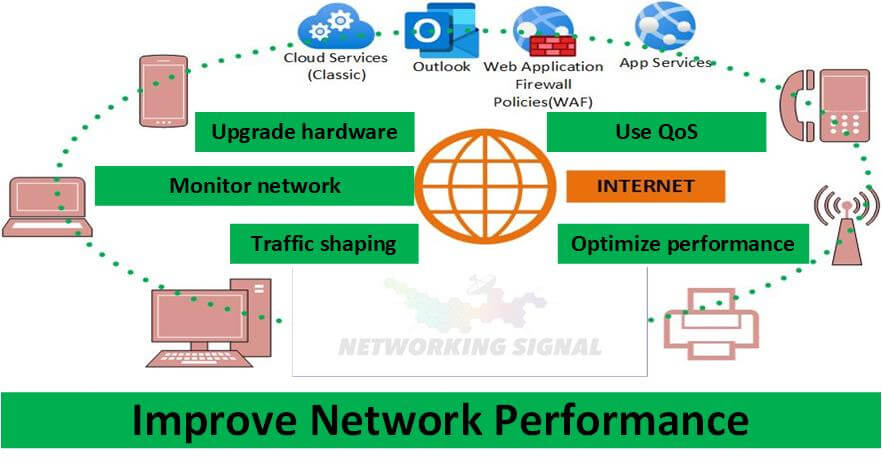7 Ways to Improve Network Performance
- Upgrade your hardware
- Use quality of service controls
- Implement traffic shaping
- Install a caching proxy server
- Use a content delivery network
- Optimize your website for performance
- Monitor your network regularly
1. Upgrade your hardware
If you want to improve network performance, one of the best things you can do is upgrade your hardware. This means upgrading your routers, switches, and other networking equipment to newer, faster models. If you have an older network, it may be time for a complete upgrade.
2. Use quality of service controls
Quality of service (QoS) controls can help improve network performance by prioritizing certain types of traffic.
- For example, you could prioritize VoIP traffic over email traffic. This would ensure that your VoIP calls are clear and reliable, even if your email is slow.
3. Implement traffic shaping
Traffic shaping is a technique that can be used to control how much bandwidth certain types of traffic can use.
- For example, you could limit video streaming to 5 Mbps. This would free up more bandwidth for other traffic, such as VoIP or email.
4. Install a caching proxy server
A caching proxy server can improve network performance by caching commonly accessed data. This means that the data does not need to be downloaded from the internet every time it is requested.
5. Use a content delivery network
A content delivery network (CDN) can improve network performance by distributing content across multiple servers. This ensures that users can always connect to a server that is close to them, which can improve speeds.
6. Optimize your website for performance
If you want to improve network performance, one of the best things you can do is optimize your website for performance. This means reducing the number of requests that your website makes, and optimizing the code and images on your site.
7. Monitor your network regularly
Monitoring your network regularly can help you identify and fix problems that are causing poor performance. There are many tools available that can help you monitor your network, including free and open-source options.
How do switch buffers affect network performance?
Switch buffers affect network performance by allowing data to be stored temporarily so that it can be sent when the connection is clear. This can improve speeds and reduce congestion. However, if the switch buffer is too small, it can cause data loss.
How to measure network performance?
There are a few different ways to measure network performance.
- One way is to use a tool like Pingdom or GTmetrix to test the speed of your website.
- Another way is to use a tool like NetLimiter or Bandwidthplace to test your internet connection speed.
- Finally, you can use a tool like SolarWinds or ManageEngine to monitor your network for potential issues.

